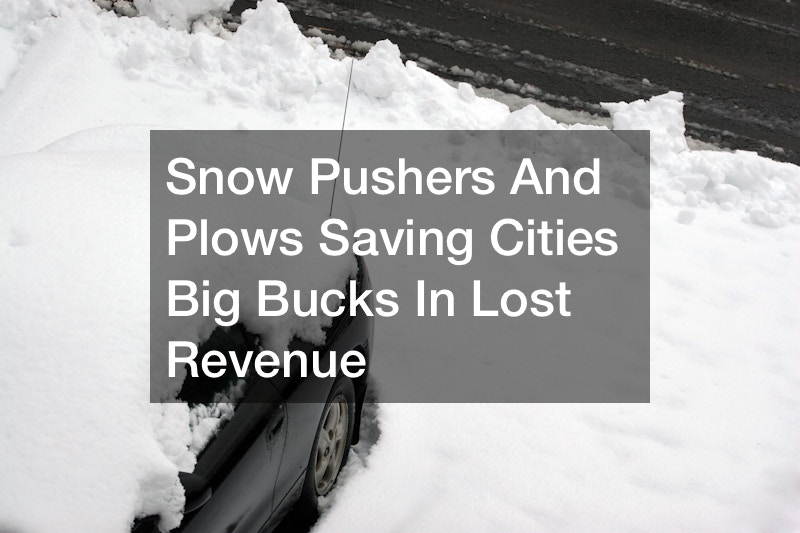Snow Pushers And Plows Saving Cities Big Bucks In Lost Revenue


Snow plows are a normal part of the winter landscape in areas that get snow. Not one kind of plow fits all the needs of all areas. There is a difference in snow removal systems and equipment. An area with little snow doesn’t require heavier equipment, for example, heavy truck snow removal equipment, nor do they need to look for available trailers for sale. A push plow or a drag-behind snow plow can work.
How does one choose which equipment is needed? Snow plow manufacturers and dealerships are good places to get advice. They can inform you about the various types of snow removal mentioned as well as explain the materials and how these materials stand up during use and irritants like salt. They are also a good source for former buyers snow plow parts on equipment the buyer already owns.

The monetary aspect of a city keeping a fleet of snow removal equipment, especially a larger city, may seem like excess usage of funds. The truth is, winters usually have at least one major storm each year. Even areas that never get snow have seen more snow. So, snow removal systems help citizens by keeping roads clear.
Snow pusher manufacturers are at their busiest from Fall through the end of Winter, selling heavy duty equipment to a variety of customers including municipalities, snow removal contractors and universities. About 80% of sales are made through a dealer network, with the balance going direct to buyers.
We’ve all seen the snow removal equipment hard at work after a big storm, but how many know there are different types for specific applications? Snow pushers are used to contain snow and relocate it. Snow plows mostly just move it off to one side. You’ll find snow pushers being used to clear airport tarmacs, parking lots and other large areas.
The popular rubber edge snow pusher came first, and then 20 years later a steel edge version was produced for areas where more cutting power is needed. Variations include the snow box pusher and the angled snow pusher.
Of course, there are several different sizes of equipment available as well, from heavy duty snow plows down to a much smaller bobcat snow pusher.
Snow pusher manufacturers know the punishment their equipment will take, so they use welded joints throughout and engineer all parts and finishes for maximum weather-resistance and durability. Coatings have to be thick enough to withstand corrosion from the salt used on roadways.
One or more times each year, certain parts of the U.S. can expect to receive enough snow to require the use of removal equipment. In 2014, the cost of getting the snow off of New York City roads and streets was over $130 million. But it was a worthwhile investment, as a study the same year showed the cost of a one-day snow-related shutdown in the city could run as high as $700 million, with $152 million of that being lost retail sales.
So, when you consider the number of cities where road clearance becomes necessary at least once each winter season, the economic impact of snow pusher manufacturers in the United States and Canada is significant indeed.

